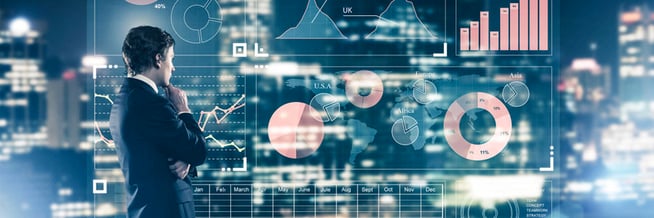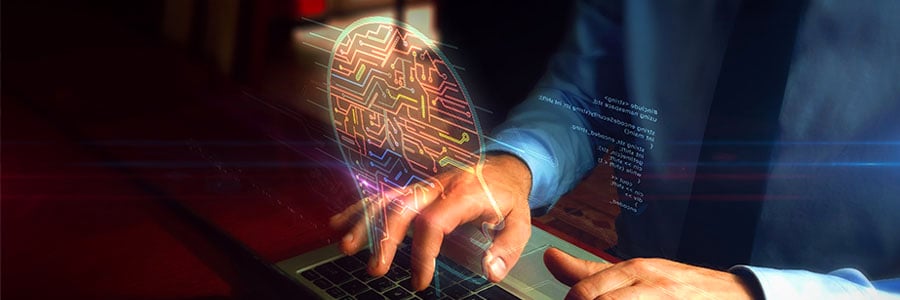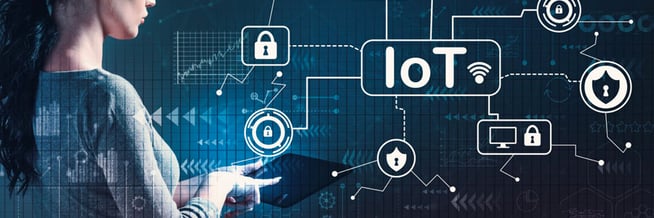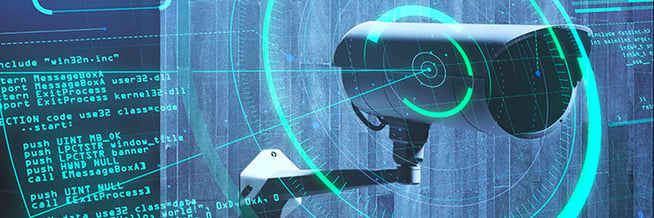By Jay Palter | April 19, 2023
The next three to five years will see artificial intelligence (AI) come into its own in the physical security field. Long a popular tool in cybersecurity, AI is now poised to revolutionize how we conduct real-world security operations in ways never before imagined. It will both create new opportunities and enhance the ways we already work.
Make no mistake, AI is already here, changing how we work and live. But soon, we’ll see teams at all sized institutions use artificial intelligence and security technologies to enable the kind of security presence previously only possible with an enterprise-scale budget.
This article explains what artificial intelligence actually is—and is not—and digs into some of the ways we can expect it to improve physical security operations in organizations across public and private sectors.
Artificial Intelligence and Security: How Do They Go Together?
Artificial intelligence for business security sounds complex and intimidating, but it’s quite straightforward. AI means any software or computer algorithm that can complete what people would consider an intelligent task. They usually only do one task at a near-human level. For example, answering typed questions about a narrow topic or identifying shapes and patterns in video feeds.
Despite what Hollywood may lead you to believe, AI-powered robots with superhuman intelligence will not likely destroy the security industry. This is because the intelligent software available today and on the horizon is intelligent in very specific ways. It is getting more powerful every day, but human-like intelligence looks to remain a solely human quality for quite a while.
New security AI tools will offer valuable insight into our security and operational environments, automate even more tasks so your staff can focus on core security objectives, and give rookie security officers the technologically-powered expertise to function like your most experienced veterans. In other words, AI is poised to become a powerful force multiplier for many security practices.
So it is no wonder 80 percent of businesses want to adopt AI in their operations and executive decision-making.
Managing Information
In the past few years, we’ve seen the rise of Big Data in security. Fortunately, managing the flow of large volumes of data is where AI can tackle busy work for security teams.
Big Data
 Big Data refers to the collection and analysis of large data sets that have only become possible with the rise of high-volume digital storage devices. Big Data analytics techniques are powerful but cumbersome. AI tools will aid human analysts in taming this information flow, detecting patterns, and creating actionable threat intelligence.
Big Data refers to the collection and analysis of large data sets that have only become possible with the rise of high-volume digital storage devices. Big Data analytics techniques are powerful but cumbersome. AI tools will aid human analysts in taming this information flow, detecting patterns, and creating actionable threat intelligence.
Machine Learning in physical security
 Machine learning is a software development technique where you feed an AI program a large volume of data on a given subject, like video feeds showing traffic patterns. The program can learn to identify something independent of human operators, for example, a car speeding through a red light.
Machine learning is a software development technique where you feed an AI program a large volume of data on a given subject, like video feeds showing traffic patterns. The program can learn to identify something independent of human operators, for example, a car speeding through a red light.
We can teach machine learning AI algorithms to monitor search queries, even conduct repeated sorting and filtering activities, and automatically complete them for analysts. That will help security teams identify important trends in large data sets before they would be evident to direct human observation, for example, as insider threat detection.
Autonomous vehicles, like security and law enforcement drones, commonly employ machine learning piloting programs so they can learn to navigate unique environments automatically. Think of them as advanced versions of robot vacuum cleaners that learn the custom layouts of each room in your house.
Optimizing Work
The ability of artificial intelligence to process large volumes of data faster than people will also help organizations more effectively deploy various kinds of security resources. Solutions already exist for physical asset management and fleet management, where it’s best practice for vehicles or assets to follow a balanced or rotated use schedule. These systems utilize biometric authentication and adaptive authentication to provide AI management systems with valuable data on employee use of assets.
Fleet supervisors are quite familiar with the tendency for drivers to select a fleet’s newest vehicles. That can wreak havoc on maintenance schedules, but it takes a considerable amount of manual effort for a supervisor to track vehicle usage in a way that creates an effective rotation schedule. New fleet management dashboards could include an AI agent that could analyze usage against maintenance and depreciation schedules and rotate vehicle selections on the fly.
Increasing Efficiency
Organizations are complex ecosystems with interconnected technologies, personnel, and business processes. When things are working well, they all flow in the same direction. When they’re not, these resources crash into each other, causing disruption and inefficiency. With largely manual security response efforts, your personnel can spend as much time wading through alarms, reports, insider threat detection notifications, and calls, as they do on productive security work.
Artificial intelligence and security ‘smart systems’ track all these incoming messages and data streams and organize them into meaningful dashboards for human operators. These smart systems respond to notifications independently, leaving only the truly meaningful ones for your workers. These smart systems act like a digital second-in-command fielding the small matters so your human personnel stay in a constant state of readiness.
Supporting Better Decision Making
Analytics is the computerized, systematic analysis of data. Software analytics systems can process much larger data sets in minutes than human analysts can ever hope to churn through in their lifetime. And while they’re not immune to bias, they don’t suffer from the same blindspots and other shortcomings that a human analyst might have looking at raw data.
Modern security analytics are driven almost completely by AI technologies. And advanced behavioral analytics currently in development will be able to identify changes in an individual’s actions from data culled from access logs and video feeds. These analyses are pre-processed on the fly before sending them to security teams to help them confirm threats and identify responses quickly.
Other analytics tools improve forensic responses. For example, these tools can automatically search through log or video archives to analyze past behavior for notable events and automatically add them to case files.
One of the primary purposes for implementing AI systems is to automate routine or fatiguing tasks so staff can focus on the most productive security efforts. Those efforts could include video searches, as described above, and live feed monitoring.
Instead of staff dividing their attention among all feeds and potentially misidentifying something half-seen out of the corner of an operator’s eye, AI analytics packages can devote full attention to every feed simultaneously and alert human operators to the items they actually need to see.
Beyond the Private Sector: AI is a Key Enabler of Smart Cities
Artificial intelligence and security are already combined in the public and private sectors. Still, we’re on the cusp of a new revolution in city planning called the Smart City that will see AI take a particularly important role. Smart cities run on deeply networked and software-driven public services, all communicating to automate civic operations, including law enforcement and other agency security operations.
Internet of Things (IoT) tracking
 The Internet of Things (IoT) is a network of embedded sensors and communication infrastructure. IoT sensors are typically attached or integrated into remote systems that need to be monitored, like a security door, a traffic light, or a public transit vehicle like a bus. IoT sensors collect information and, using machine learning AI tools, can adjust their environments based on that data or according to directions from human operators.
The Internet of Things (IoT) is a network of embedded sensors and communication infrastructure. IoT sensors are typically attached or integrated into remote systems that need to be monitored, like a security door, a traffic light, or a public transit vehicle like a bus. IoT sensors collect information and, using machine learning AI tools, can adjust their environments based on that data or according to directions from human operators.
Learn how to secure IoT Devices
Artificial Intelligence (AI) analytics layer
 It is an understatement to say that civic law enforcement and security operations are complex, with many moving parts. AI management systems help with the analysis and decision-making needed to keep people safe in even the most hectic cities around the world.
It is an understatement to say that civic law enforcement and security operations are complex, with many moving parts. AI management systems help with the analysis and decision-making needed to keep people safe in even the most hectic cities around the world.
Smart AI systems can monitor data as it comes in from IoT sensors distributed around a city for trend or anomaly detection that might indicate a security risk. They can then alert security personnel early so they can respond before a full-blown crisis occurs. For example, they may be able to detect a minor leak before a water main breaks, or they might identify a pattern of low-level crime that indicates a possible spike in the neighborhood if left unaddressed.
AI Supports Human Security Efforts; It Doesn’t Replace Them
So as we’ve seen, artificial intelligence improves practically every aspect of physical security. It provides better information management, optimized workflows, and supports better decision-making.
AI isn’t going to replace human security efforts. On the contrary, it will improve them beyond any level we could hope to achieve on our own. You can think of it as a more effective form of outsourcing. You’re not shifting entire jobs to lower quality, outsourced labor. Instead, you’re just taking the easy-to-automate, tedious work and shifting it to smart computer systems.
Then on top of that, you’re leveraging the Big Data capabilities of AI systems to find value in the tidal waves of data networked security systems constantly collect. Artificial intelligence makes human security personnel better at their jobs and supports them in ways they could never hope to achieve independently.
Organizations are Getting Smarter Using The Power of RFID.
Learn how RFID tracking systems work, how to adapt them to your organization's workflows, and how they're used in various industries today.
Subscribe to our blog

Jay Palter
Vice President of Marketing & Partnerships




